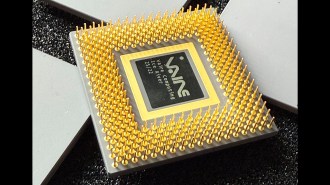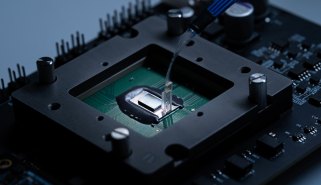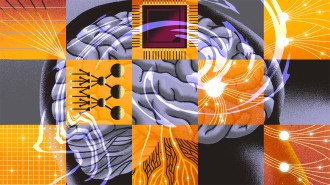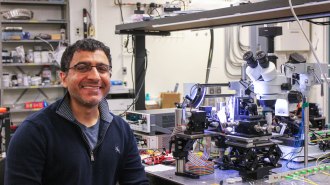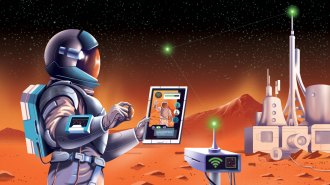- More than 2 years ago
With a laser, a mirror and some simple calculations, researchers have created a fast, reliable way to produce long strings of random numbers. This speedy method, reported in the July 10 Physical Review Letters, may one day be used to improve data encryption, computer simulations and even gambling software.
Generating truly random numbers isn’t easy. Many techniques rely on computer algorithms to create a seemingly unpredictable chain of numbers. But such methods, says study coauthor Michael Rosenbluh, are not truly random. Under certain conditions, anyone with the same program could reproduce an identical series. Despite this flaw, many of today’s encryption programs still rely on such computer-generated numbers.
Other techniques, based on the inherent messiness of physical processes, generate truly random numbers but work too slowly to be practical. These systems create strings of random bits — 0s and 1s — that can encode numbers. “If it takes you 10 years to generate a gigabit, it’s not very helpful,” says Rosenbluh, of Bar-Ilan University in Israel. “What we’ve shown is that you can generate very random numbers at very high rates.”
In the new study, researchers harnessed chaos from a laser to generate 12.5 gigabits of data —more than twice the data a standard audio CD holds — every second. This rate, the researchers say, beats the 1.7 gigabits per second of another laser-based method reported by a different group last year, and is on par with the speed of computer-based number generators.
Rosenbluh and his colleagues Igor Reidler, Yaara Aviad and Ido Kanter shined a laser beam at a mirror a few meters away so the beam bounced back into itself. Light originating from the laser combined with the returning laser light to make a chaotic, unpredictable system that emits varying light intensities. In this system, Rosenbluh says, the laser “just goes wild.” Detectors then measured the varying intensities of laser light, and an analog-to-digital converter turned the light information into digital bits.
This wild system alone, though, is not totally wild. The time it takes a beam of light to travel from the laser to the mirror and back imposes a non-random structure on the system. “The problem,” Rosenbluh says, “is that the randomness repeats itself every round-trip time.”
To eliminate this predictable pattern, the detector converted light to bits at non-regular time intervals. The team fed this data into a computer program, which performed simple and quick mathematical manipulations, including throwing out some of the bits. These safeguard calculations appeared to eliminate all of the periodicity, resulting in a string of completely random bits, says Rosenbluh.
It remains to be seen whether this new truly random number generator will prove useful and replace computer-based systems. Mathematician Peter Hellekalek of the University of Salzburg in Austria questions the utility of the new method. “A laser setup is less practical than portable software,” he says.

